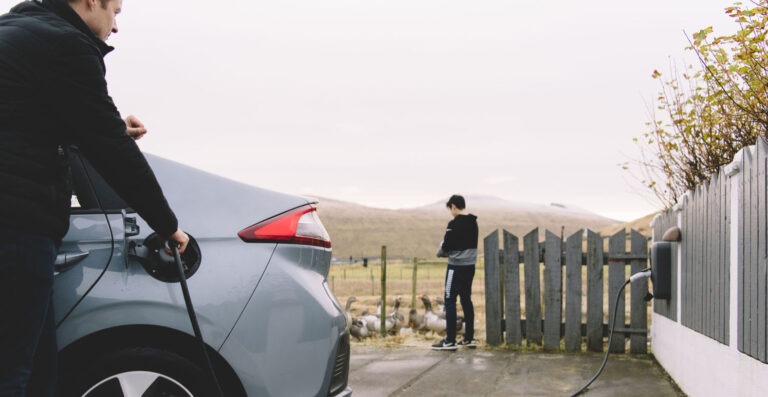 Faroe Islands, a self-governing Danish archipelago of 18 islands between the Norwegian Sea and the North Atlantic Ocean, is home to 50,000 people. Disconnected from mainland Europe, the islands cannot import electricity. With the rising adoption of electric vehicles, this meant that SEV, the community owned electricity supplier to 97% of the archipelago needed to build an EV charging ecosystem that would serve its residents reliably while ensuring a stable grid.
Faroe Islands, a self-governing Danish archipelago of 18 islands between the Norwegian Sea and the North Atlantic Ocean, is home to 50,000 people. Disconnected from mainland Europe, the islands cannot import electricity. With the rising adoption of electric vehicles, this meant that SEV, the community owned electricity supplier to 97% of the archipelago needed to build an EV charging ecosystem that would serve its residents reliably while ensuring a stable grid.
SEV - A utility of the people
SEV is an inter-municipal utility owned by all the municipalities in the Faroe Islands. Most of the profit, from sales of electricity, is spent on future developments on the power supply system. As the main electricity producer and the only distributor in the Faroe Islands, SEV has full responsibility for the islands’ energy production and supply. Given the Island’s remote location in the North, SEV cannot purchase electricity from neighboring countries, giving the company full responsibility for producing enough electricity to meet the electricity demand and keeping the grid stable at all times.
Are islands ready for electric vehicles ?
Short distances make electric vehicles particularly suitable for residents of the Faroe Islands but having an utterly self-sufficient power generation presented several challenges. Disconnected from mainland Europe, SEV would need to meet the electricity demand without building energy dependence or endangering grid operation. And since electric vehicles are dynamic energy consumers, every charging point would need to be monitored and managed for load management in order to ensure grid resilience and sustainability. In addition, charging stations on the Faroe islands would need to be durable enough to withstand a wide spectrum of weather conditions from rain and snow to sunny days and salty winds.
Building a resilient EV charging ecosystem
To ensure that the citizens of Faroe islands had a reliable EV charging ecosystem, SEV needed to ensure that the charge points had enough capacity, and didn’t disrupt the grid while also offering high level visibility and management of all charge points. SEV chose Etrel charging solutions, taking into account each of these considerations.
- Autonomous Frequency Response: SEV needed to provide nearly 700 public charging points for public use with twice the number of domestic chargers without the threat of disrupting the grid. Given the island’s remote location and reliance on local energy production, Etrel chargers load management capabilities and charging profiles are of utmost importance. In line with Etrel’s Interactive Charging framework, the INCH charging stations provide Autonomous Frequency Regulation built on-charger, to allow rapid response to grid conditions, minimize charging power and stabilize the grid at times of excess demand. During periods of high volatility, the Frequency Response feature enables SEV to balance power demand to local energy production and avoid power outages.
- Charge point Management SEV also uses Etrel OCEAN charge point management software to manage and control their charge points all over the Faroe Islands. With all private, semi-public, and public charge points connected to a single back office, SEV will be able to exercise area load management and flexibility operations via the cloud-based solution in the future.
- Durability – In an environment where you can experience rain, snow, and sun all on the same day with a whiff of salty winds, chargers need to be rugged and durable to withstand severe conditions that can damage exposed components. The aluminium housing on the Etrel INCH & Etrel INCH Duo chargers are not only durable but also recyclable, not to mention part of the refurbishment program offer extended lifetime and sustainability.
Next steps in the energy transition
SEV has the ambition to provide local residents with 100% renewable energy by 2030. Electric vehicles, flexible load management and drivers will all play a major role in the system as their participation in the grid will provide the needed offset for peak shaving. In order to achieve this goal, SEV is working on a virtual Powerplant project where all the cornerstones of the energy system, including consumers, will work together to ensure clean and stable energy for the community.






